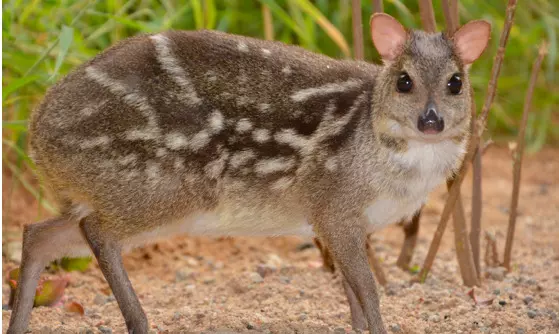How new study at Hyderabad's LaCONES- CCMB could help save mouse deer from extinction
Mouse deer or Indian chevrotain plays a major role in the forest ecosystem as a seed disperser and forms important prey for many small and large carnivores.
By Newsmeter Network
Hyderabad: A new study has revealed that pheromones play a key role in the reproduction of mouse deer by bringing opposite sexes together for mating in the wild as they live a solitary life.
As part of the conservation breeding program, Dr. G Umapathy's group at LaCONES- CCMB studied the reproductive behavior of mouse deer in captivity. They discovered the occurrence of novel post-partum estrus (the phase where the animal is ready to mate). They found that the female mouse deer shows estrus and mates within 4-6 hrs of delivery. This is the shortest post-partum estrus observed so far among large mammals.
This finding led to a further study on understanding the reproductive physiology of the mouse deer using non-invasive methods. While analyzing the hormone profiles, they discovered 16-androstenes sex pheromones (androstenone and androstanol) in mouse deer which have been previously reported to play a major role in the reproduction of pigs. The scientists examined the molecular characteristics of these pheromones, their synthesis pathway, and their functions in mouse deer reproduction.
"We found that pheromones levels were significantly elevated in the female mouse deers during delivery, post-partum estrus, and mating. We also found a positive correlation between pheromones and estrogens one week before post-partum estrus and mating. These findings suggest these pheromones play a role in the reproduction of mouse deer by bringing opposite sexes together for mating in the wild as they live solitary life. Our findings have already helped in the breeding of mouse deer at Nehru Zoological park but will also help other Indian zoos and elsewhere," said Dr. Umapathy.
Mouse deer or Indian chevrotain plays a major role in the forest ecosystem as a seed disperser and forms important prey for many small and large carnivores. Though it is commonly found in most forested areas, it has been listed in Schedule I and endangered in the Wildlife Protection Act (1972) due to frequent hunting for their bushmeat.
A conservation breeding and species recovery program for mouse deer was initiated in 2010 by Nehru Zoological Park in collaboration with the Laboratory for the Conservation of Endangered Species (LaCONES) at CSIR-CCMB with support from the Central Zoo Authority. The program started with 06 mouse deer (02 males and 04 females) and aimed to increase their numbers in captivity and reintroduce them into the wild.